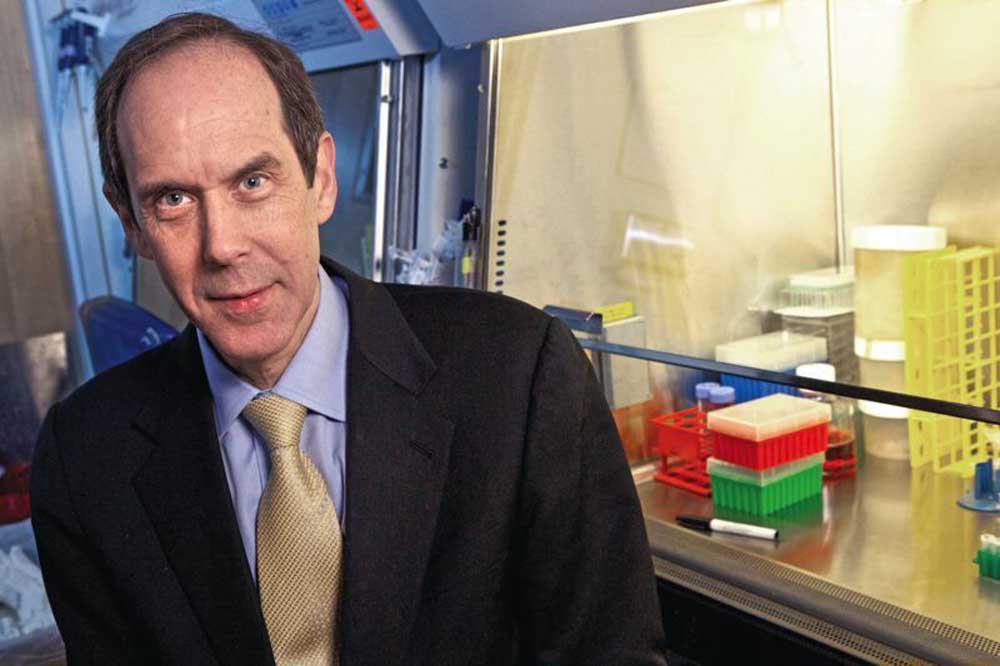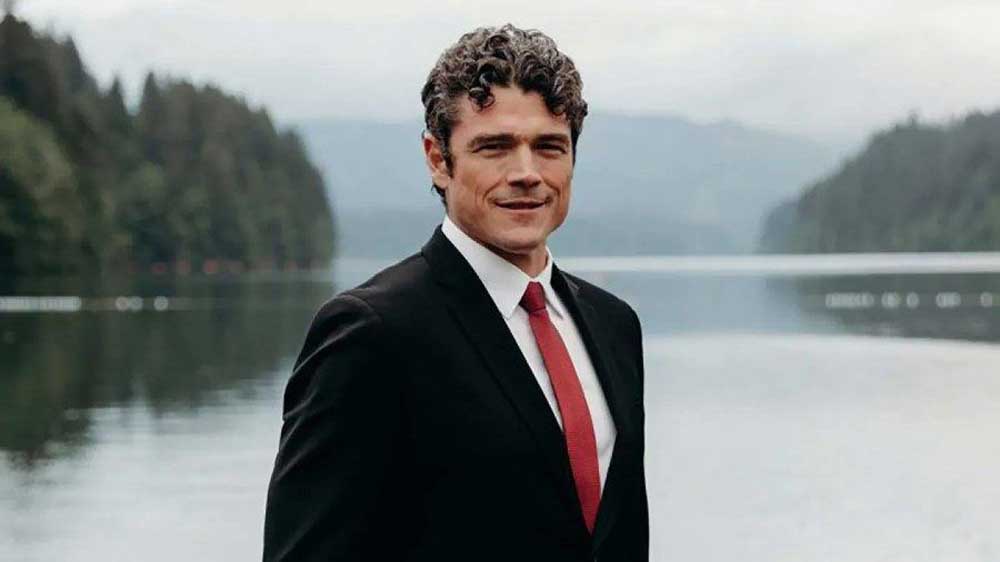Q&A: Star researcher Brian Druker says OHSU has lost its way
Published 11:07 am Wednesday, December 4, 2024

- Dr. Brian Druker has resigned as director of the OHSU Knight Cancer Institute.
In a heavy blow to Oregon Health & Science University, internationally renowned cancer biologist Dr. Brian Druker has stepped down as CEO of Knight Cancer Institute while taking his concerns public that the university has “lost sight of what is crucial and forgotten our mission.”
Trending
Druker, in a Dec. 3 email to university leadership and staff at the institute, wrote that he made the decision to step down with “deep sadness.” He’d always believed that at OHSU, “we could do things that no one else could,” he wrote, but his goals no longer feel so achievable. He’s decided to shed his administrative responsibilities and focus on research in his lab.
Druker helped make OHSU a prominent player on both the national and international stage. A physician, he specialized in chronic myeloid leukemia at Harvard Medical School and Dana-Farber Cancer Institute in Massachusetts until OHSU recruited him.
Not long after moving west in 1993, Druker spearheaded work that led to the pioneering leukemia drug Gleevec, turning a fatal condition into a treatable one. The advance garnered national and international recognition, made him the subject of multiple books, and helped drive the formation of the Knight institute thanks to charitable gifts Druker attracted.
Trending
Druker’s email was first reported by Willamette Week. The Portland Business Journal has added further coverage.
In the wake of his announcement, the university issued a statement thanking him for his contributions. “Today, Dr. Druker announced his resignation as CEO of the OHSU Knight Cancer Institute. Dr. Druker has led the OHSU Knight Cancer Institute since 2007 and leaves an indelible legacy, such as the successful completion of the historic Knight Cancer Challenge. OHSU is grateful for his many years of leadership and looks forward to continued collaboration with him at OHSU through his research and patient care endeavors.”
Druker’s decision comes at a rough time for the university. It’s battling financial pressures that have led to deep layoffs and a decision to deemphasize less profitable types of care. At the same time, it’s experienced chaos and dysfunction in its top management, while battling prominent concerns over its increasingly controversial bid to take over Legacy Health.
The drug researcher’s willingness to push institutions to do better is not new. While championing OHSU’s role in research, Druker also has pushed the pharmaceutical industry to make drugs more accessible and for the federal government to negotiate with drugmakers to bring prices down. He once joined other doctors in a public letter calling on the profession to champion the cause of lower drug prices in Washington, D.C.
The following interview has been edited for clarity and brevity.
The Lund Report: Can you talk about the process that led up to your decision?
Brian Druker: Over the course of my career, I’ve gotten further and further away from research and patient care and more and more into administration. And as I think about what I want to do in my last chapter, if you will. I really want to do something that’s going to impact patient care, patient experience, the health of Oregonians. And by spending my time and doing the administrative work, I find that as OHSU has grown, it’s gotten more bureaucratic, it’s gotten more difficult to get things done. And I kind of want to get back to my roots, which were doing research, patient care and having an impact.
TLR: Your email talks about having concluded that those goals of advancing cancer research and improving patient care are “no longer achievable at OHSU,” can you talk a little bit more about what you meant? When you say “we’ve lost sight of what is crucial and forgotten our mission,” can you talk about what you meant specifically?
Druker: As you have reported in The Lund Report, and anybody who covers health care knows, the finances of health care have gotten really difficult. Our costs have gone up, our revenue hasn’t. It’s a tough time to be in the health care field, but at OHSU, one of our missions has to be developing life-saving medicines like Gleevec, and that’s what we do. It’s what our mission has to be, which is, of course: We want to deliver great patient care, but we want to make sure that we’re developing knowledge that will lead to the next breakthrough that will benefit people that live and work in Oregon and beyond.
And if we’re solely focused on the financial aspects of medicine, and forgetting that we have to make some tough choices when resources are constrained — and they are — we have to make some really tough choices about where do we best invest to excel. And that requires strategy and leadership, and that’s really hard. What I’m saying is that we have to be able to make those tough choices, and if we don’t make those tough choices, then we lose sight of what’s important, and that’s developing life-saving medicines for the next generation of people.
TLR: There was, of course, the university’s strategic alignment that seemed to focus on doing potentially more profitable surgeries, but it doesn’t sound like you’re necessarily alluding to that. It sounds like you’re alluding to a lack of focus on the research and the life-saving aspects of that.
Druker: I get that if there’s no margin, there’s no money to invest in research. I get that. But ultimately it also means making some really tough choices about: Are there areas where we can cut? Are there areas where we should grow? Those are the really tough decisions that we have to face because we can’t do everything. And so again, it comes down to: What is it that we want to focus on? And it can’t be that we have to focus on making money. And if that’s the message that comes across, that leads to the low morale that we have at OHSU. People need believe that we’re doing something that’s bigger than ourselves.
And go back to the energy, during the Knight challenge that we were focused on — we want to end cancer as we know it. We want Oregon to be the place where that happens. There was energy and excitement around that, and that’s what I’m really trying to get at, is we need to get that energy and excitement back, for all of us are doing something that’s bigger than ourselves. You know, I look at the front line, our nurses, our physicians, they’re always doing the important work, and I get messages every day from patients who are thankful for those people on the front lines. But ultimately, we have to do something bigger, and we have to coalesce around something that’s bigger.
TLR: Is there some specific decision or lack of decision at OHSU that helped you reach this conclusion?
I don’t know if there was anything specific. It’s just something that, as I reflect back on the last couple of years, as you know I moved from the director of the OHSU Knight Cancer Institute to the CEO, because I wanted to get away from a lot of the day-to-day operations. And what I found is even in that transition, I wasn’t getting away from the day-to-day operations, it was just that it changed from more of the research to the clinical operations. And as I’ve reflected on that transition, I want to get back to doing things that will have a big impact for our patients and for the way we manage our patients.
TLR: In terms of next steps, it sounds like you are open to opportunities.
Druker: First of all, I love Oregon. I love living and working here. I love OHSU and (if) there’s things that I can do here, that is always going to be my preference. But if an opportunity comes along that I think is world-changing, and it’s not here, I’d be open to that.
TLR: Was there any discussion with OHSU about this announcement? I mean, I assume they were probably begging you to do other things. It sounds like if that happened it wasn’t successful.
Druker: Uh (laughs), yeah. It wasn’t.
TLR: You touch upon a lot of issues that I think are in the background … like the cost of care, it’s just sort of crunching everybody.
Druker: When I got to OHSU 30 odd years ago it was a pretty small, sleepy place, and it’s got 22,000 employees now. This place has grown exponentially in the last 10 to 20 years, and that brings some growing pains and some ebbs and flows, and then you’ve got all the challenges with health care financing. You know, it’s just lots of things happening.
And ultimately, I need to decide where I can make my biggest contribution. And if working in a big bureaucracy isn’t something where I can make things happen or where I feel most comfortable, that’s okay. Are there other places, other things I can do? (Then) I should be doing them.
Nick Budnick is the editor-in-chief of The Lund Report, an independent, nonprofit online news site dedicated to in-depth coverage of Oregon’s health care industry. You can reach him at nick@thelundreport.org or on X @NickBudnick. This article is published with permission of The Lund Report. Read more stories at thelundreport.org.







